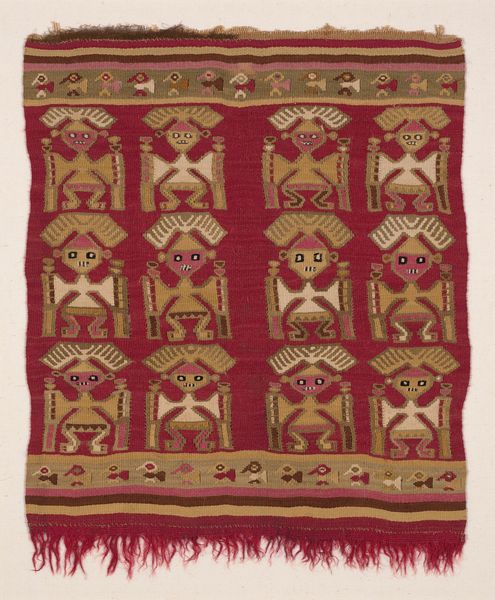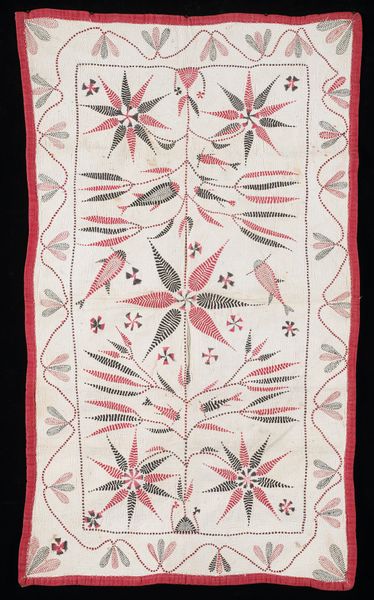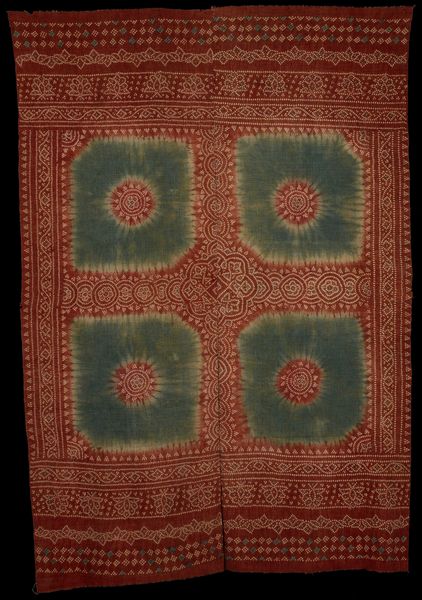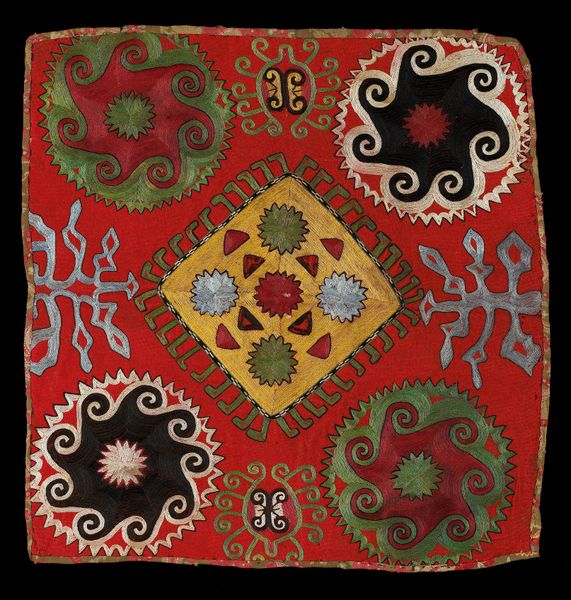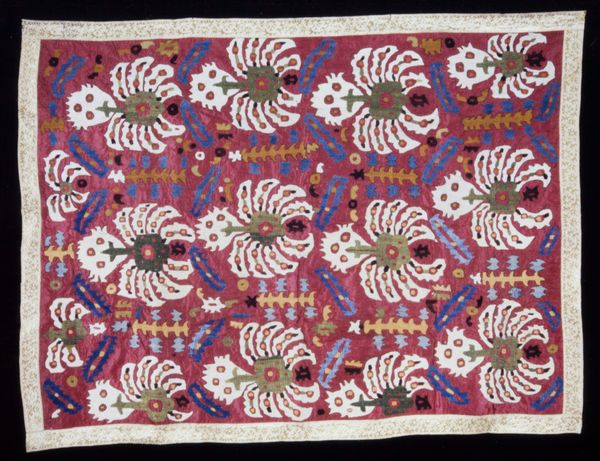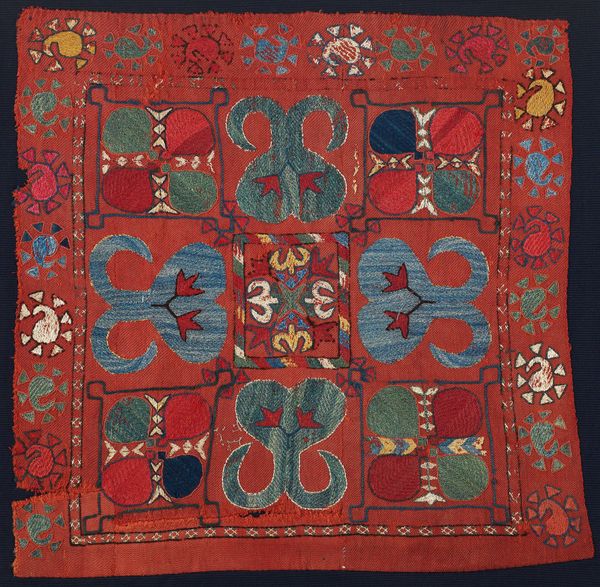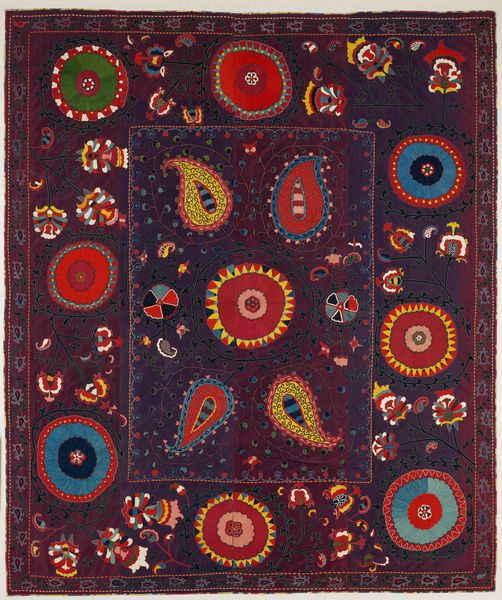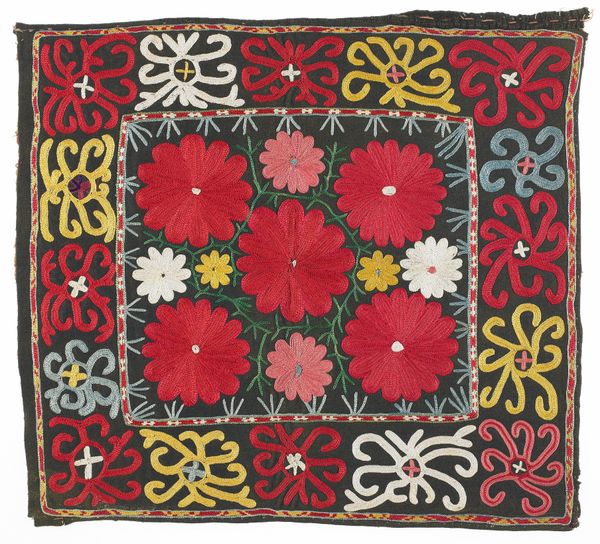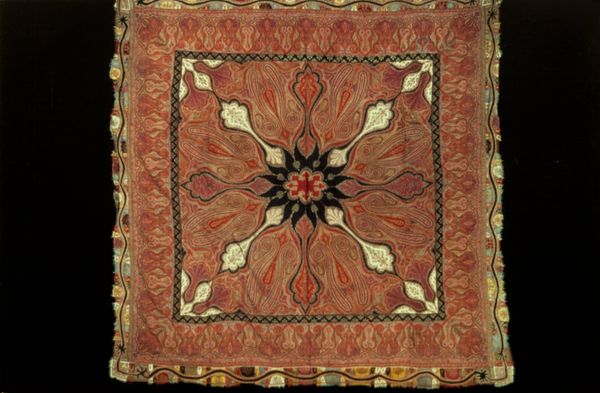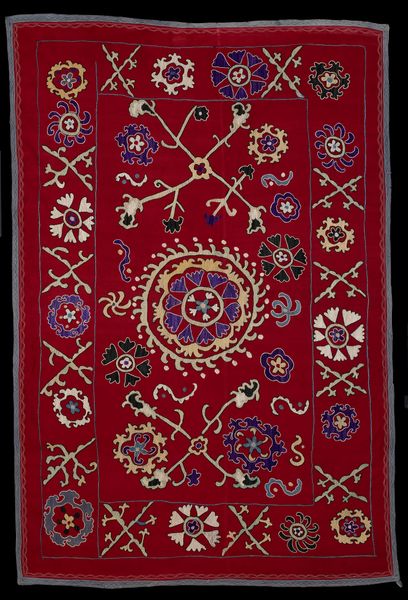
fibre-art, textile, cotton
#
fibre-art
#
organic
#
narrative-art
#
asian-art
#
textile
#
figuration
#
cotton
#
decorative-art
Dimensions: 18 3/4 x 30 3/8 in. (47.63 x 77.15 cm)
Copyright: Public Domain
Curator: My eye is drawn immediately to the elephant motif—its form seems both representational and somehow abstracted. Editor: This is a Kantha cloth, a textile made in Bengal, dating to around the 20th century. These cloths are typically made of recycled saris stitched together and embroidered. The result is an amazing object blending domestic craft with artistry. Curator: Recycled saris... so, this isn’t simply a decorative piece; it embodies reuse, resourcefulness, perhaps even a commentary on consumption within a particular social strata. I wonder about the hands that created it. Editor: Absolutely. Each Kantha tells a story, not just through its imagery, but through the very materials used. Think of the labor involved, the slow, deliberate process of stitching, breathing new life into discarded cloth. The visual imagery clearly speaks to rural life, to aspects of agricultural production that would define the place of women within that framework. Curator: The images do seem somewhat divorced from one another in composition. I wonder how the local context influenced the piece and its imagery? Was it made for local consumption, a symbolic mapping of the patron’s environment, or was it destined for trade, presenting a sanitized image of the region to outsiders? Editor: Good question. Kantha cloths historically served many purposes: as swaddling clothes, quilts, and ceremonial cloths. The motifs, like the elephant, flowers, and abstract shapes, likely held symbolic meaning, reflecting the beliefs and lived experiences of the community. Looking at the cotton here and thinking of trade in raw materials, Bengal, especially during British rule, saw great change; Kantha are great records of those material exchanges. Curator: Knowing the materials are repurposed speaks volumes. The act of taking something old and transforming it into something new, functional, and beautiful mirrors life’s cycles of renewal and the community's resourcefulness. Editor: Precisely! It’s a powerful blend of utility, artistry, and social commentary, woven into the fabric of everyday life. And for us here at the museum, it reveals much about what the circulation of cotton textiles reveals about Bengali women's aesthetic choices, their labor, and agency within a specific historical context.
Comments
No comments
Be the first to comment and join the conversation on the ultimate creative platform.
